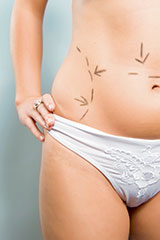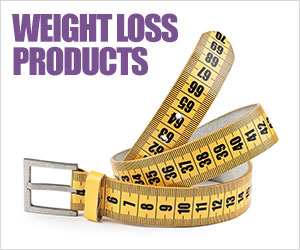Lap Band Surgery

An increasing number of Australians are turning to Lap Band surgery
as a last resort to help them
lose weight and reverse some of the life-threatening and life-limiting
affects of being morbidly obese.
In this article, we explain what Lap Band surgery is, what its advantages
are, who it is suitable for, what it involves, what it costs, what
its success rates are, what risks are involved with it, what lifestyle
changes are necessary post-surgery and where to get more information
if you need it.
What is Lap Band surgery?
Lap Band surgery is designed to help people shed most of their excess body
fat by helping them feel full all the time.
To achieve this feeling of fullness (satiety), an inflatable silicone band
is fitted around the top of the stomach which creates a small pouch above
the band. Placing the band in this way effectively reduces the size of the
stomach to the size of a mandarin.
With a much smaller stomach, people who have had Lap Band surgery can't
eat much more than a handful of food before they are completely full and
lose all interest in eating. If they do eat more than their smaller stomach
can handle, they experience stomach pain and may vomit the food up.
The advantages of Lap Band surgery
Lap Band surgery is the latest surgical procedure to help morbidly obese
people lose weight and has many benefits over its predecessors, small bowel
bypass and stomach stapling.
Specifically these advantages include:
- The tightness of the Lap Band can be adjusted.
- The Lap Band is placed using key-hole surgery which doesn't leave large scars and minimises post-surgery recovery time.
- Lap Band surgery is reversible and because nothing permanent has been done to the stomach, it can return to its normal shape.
Who is considered suitable for Lap Band surgery?
Lap Band surgery isn't for everyone. In fact, it is considered a solution
of last resort for very overweight people whose weight is dramatically impacting
their quality of life or life expectancy.
Whether or not someone is considered appropriate for Lap Band surgery depends
on a number of factors which the performing surgeon will consider before
proceeding with the surgery.
These conditions usually relate to how overweight a person is, what other
weight loss methods they've tried, how badly their weight is affecting
their health, their age and their understanding of the risks and post-surgery
responsibilities regarding healthier eating and exercise.
When it comes to how overweight a person is, a Body Mass Index of 35 or
more is considered appropriate for Lap Band surgery.
As well as being morbidly obese, surgeons generally want to know that potential
patients have exhausted all other methods of losing weight.
If a potential patient already has many of the diseases caused or made worse
by being overweight, such as diabetes and high blood pressure, they are far
more likely to be considered appropriate candidates for surgery.
In addition to the above, some surgeons may also take into consideration
the age and future life-expectancy of potential patients. In most instances,
surgeons generally won't operate on patients who are over 65 or who
are under 14 years of age.
We'll get to the potential risks involved with Lap Band surgery in
a moment, but to be considered for surgery a person also needs to be 100%
committed to eating smaller portions of nutrient-rich foods and exercising
for the rest of their lives after the operation.
What does Lap Band surgery involve?
Once the decision has been made by the patient and surgeon to go ahead with
Lap Band surgery, a number of preliminary tests are conducted to assess the
patient's current state of health and minimise any risks associated
with the procedure.
The Lap Band surgery itself is performed under a general anaesthetic and
takes about one hour to perform.
In addition to placing the Lap Band around the top of the stomach, the surgeon
will also place an access port in the abdominal wall (just under the skin).
It is via this access port that fluid is regulated to tighten or ease the
restriction of the band.
After an overnight stay in hospital an X-ray of the stomach is performed
to make sure everything is as it should be.
After leaving hospital, patients normally take a couple of weeks to start
performing normal activities. At this time, most Lap Band surgery
patients still feel tired towards the end of the day and are still learning
what eating habits suit them best.
During the first three weeks post-surgery, patients are placed on a liquid-only
diet and tend to experience quite a bit of weight loss as a result.
The first phase of this liquid-only diet consists solely of clear fluids
and once patients are comfortably coping with these, they are introduced
to liquid foods and then very soft foods such as soups, yogurt and stewed
fruit.
After a month or so, most patients are eating the foods that will make up
their permanent diet.
Unless unforeseen circumstances arise or the Lap Band needs immediate adjustment,
the only real ongoing medical support needed is annual check-ups with the
operating surgeon.
How much does Lap Band surgery cost?
In 2014, costs can vary according to your particular private health cover, but a ball park figure is around $4,900 out of pocket after all Medicare and Private Health cover rebates. In 2006, Lap Band surgery cost around $10,000, so the costs are obviously coming down.
* Prices may vary – please check current
prices among your local practitioners.
Lap Band surgery success rates
Lap Band surgery is reported to have success rates of around 90%.
On average, people who have Lap Band surgery can expect to lose between
one half and two-thirds of their excess weight.
For example, a person weighing 100 kilograms and an ideal weight of 60 kilograms
has excess weight of around 40 kilograms. One half to two-thirds of this
excess weight equals 20 to 26 kilograms. Therefore this person could typically
expect that their weight would come down to around 74 to 80 kilograms if
they had Lap Band surgery.
Older patients and those addicted to liquid calories such as colas, milkshakes
and fruit juices as well as calorie dense foods like chocolate, typically
struggle to achieve this kind of result.
The risks associated with Lap Band surgery
Some of the risks associated with Lap Band surgery are typical of any medical
procedure while others relate to the placement of the Lap Band itself.
General medical procedure risks include things like surgical complications,
infection, tissue and organ damage, heart attack and blood clots.
In addition to these very serious risks, Lap Band surgery patients are also
at risk of experiencing less serious by ongoing conditions such as heartburn,
reflux and vomiting.
Limitations of Lap Band surgery
Lap Band surgery only facilitates weight loss.
What actually causes the weight loss is the practice of healthy new lifestyle
habits that patients must commit to for life post-surgery.
Not surprisingly, these new lifestyle habits involve healthier eating and
regular exercise.
Because so little food can be eaten at one time once the Lap Band is fitted,
the healthier eating guidelines need to be particularly strict and restrictive.
Because patients can only eat a small amount each day, the food they consume
must be very nutritious.
Ideal food choices include foods that are low in fat, low in simple sugars,
high in protein and high in fibre. Ideally, these foods are consumed in three
small meals per day with no eating in between meals.
Junk food and foods high in calories such as potato chips, biscuits, cakes
and chocolate are to be completely avoided.
Because the Lap Band only works with solid food, the consumption of liquids
needs to be monitored closely and liquids that contain calories, such as
colas, fruit juices, alcohol and milkshakes are for the most part a 'no-no'.
In addition to following these general healthy eating guidelines, many Lap Band
surgery patients find that there are some foods that their body will no longer
tolerate post-surgery. These foods vary between patients but typically include
things like bread and pastas.
In addition to eating healthily, Lap Band surgery patients are advised to
exercise for at least 30 minutes per day in order to maximise their weight
loss.
More information
For more information on Lap Band surgery, please speak to your family doctor
to organize a referral or contact any of the specialist Lap Band
surgeons in your state directly.
Conclusion
An increasing number of Australians each year are turning to Lap Band surgery
as a last resort to help them lose weight and reverse some of the life-threatening
and life-limiting affects of being morbidly obese.
In this article, we explained what Lap Band surgery is, what its advantages
are, who it is suitable for, what it involves, what it costs, what its success
rates are, what risks are involved, what lifestyle changes are necessary
post-surgery and where to get more information if you need it.
We hope that you have found this article informative and thank you for visiting
weightloss.com.au.
© Copyright Ultimate Weightloss.
This article was written by Scott Haywood.
Scott is the editor of weightloss.com.au. Scott has developed an expertise in fitness and nutrition, and their roles in weight loss, which led him to launch weightloss.com.au in 2005. Today, weightloss.com.au provides weight loss and fitness information, including hundreds of healthy recipes, weight loss tools and tips, articles, and more, to millions of people around the world, helping them to lead happier, healthier, lives.
You can follow Scott on Google+ for more interesting articles.





















